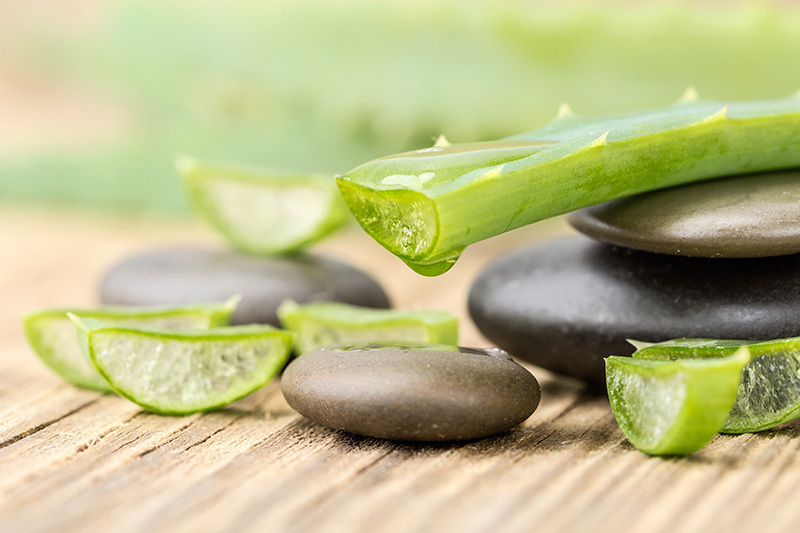Unravel the captivating secrets behind sunflowers you haven't heard
Posted on 13/08/2025
Unravel the Captivating Secrets Behind Sunflowers You Haven't Heard
Sunflowers are more than just a cheerful symbol of summer and the countryside. While their bright yellow petals and tall stalks are instantly recognizable, there's a wealth of intriguing secrets behind sunflowers that remain largely unknown to the average enthusiast. In this comprehensive article, we invite you to unravel the captivating mysteries of sunflowers, exploring their fascinating biology, history, cultural significance, and surprising uses. Whether you're a gardener, nature lover, or simply curious, these lesser-known facts about sunflowers will astonish and inspire you.
The Ancient Origins and Mythology of Sunflowers
Most people are familiar with sunflowers thanks to their iconic golden blooms, but their story stretches back millennia, weaving through mythology and ancient agriculture.
Tracing Sunflowers Back in Time
- Origins in North America: Sunflowers (Helianthus annuus) are native to North America, dating back over 4,500 years. Archaeological findings in the Southwestern United States reveal ancient peoples cultivated sunflowers even before maize (corn!).
- First Domestication: Indigenous tribes such as the Hopi and Aztecs revered sunflowers--using them for food, oil, dyes, and medicine.
Sunflower Symbolism in Myth and Folklore
- Adoration and Devotion: The sunflower's heliotropic behavior (turning towards the sun) inspired the Greeks to spin a tale of unrequited love. The myth of Clytie and Apollo describes a nymph transformed into a sunflower, forever following the sun god's chariot across the sky.
- Spiritual Significance: In some Native American cultures, sunflowers symbolize harvest, bounty, and gratitude, often appearing in dances and rituals that celebrate life's cycles.

The Science Behind Sunflowers: More Than Meets the Eye
Heliotropism: Tracking the Sun
One of the most captivating secrets of sunflowers is their mesmerising ability to follow the sun--a phenomenon called heliotropism. Young sunflower buds exhibit this unique behavior, facing east at dawn and gradually turning west by sunset.
- Why do sunflowers follow the sun? This daily movement maximizes photosynthesis, allowing the plant to gather as much energy as possible.
- Secret switch: Once sunflowers mature and bloom, they generally settle facing east, optimizing warmth and attracting more pollinators such as bees. This permanent orientation boosts seed production, a truly ingenious evolutionary strategy.
- Fun Fact: This behavioral adaptation is unique to annual sunflowers. Not all sunflower varieties or relative species display the same level of solar tracking.
The Fibonacci Mystery Hidden in Sunflower Heads
- Nature's Golden Ratio: If you look closely at a sunflower's central disc, you'll notice a mesmerizing spiral pattern. This arrangement isn't random--sunflower florets align with the Fibonacci sequence. The optimal packing of seeds follows a spiral of 34 in one direction and 55 or 89 in the other, reflecting the mathematical marvel found throughout the natural world.
- Benefits: This unique pattern allows the maximum number of seeds to fit into the flower head, demonstrating both beauty and efficiency. The phenomenon is so captivating that it often inspires mathematicians, artists, and biologists alike.
The Surprising Versatility of Sunflowers: Beyond Seeds and Oil
While most people think of sunflower seeds as snacks or sources of oil, the uses of this remarkable plant extend far beyond the kitchen cupboard. Here are some lesser-known sunflower secrets that reveal just how versatile this plant truly is.
Sunflowers as Environmental Superheroes
- Phytoremediation: Sunflowers possess a unique ability to absorb toxins from the soil through their roots. After the 1986 Chernobyl nuclear disaster, scientists planted fields of sunflowers to extract radioactive isotopes such as cesium-137 and strontium-90 from contaminated land. This process, called phytoremediation, continues to play a vital role in modern environmental cleanup efforts.
- Pollinator Paradise: Sunflowers are attractors of beneficial insects. Bees, butterflies, and birds are all drawn to sunflowers, which can help boost biodiversity in gardens and agricultural landscapes.
- Eco-friendly Products: Sunflower stems can be turned into biodegradable paper and fiber. The hulls are used in mulches, fuel, and even as cattle feed, exemplifying sustainable agriculture in action.
Unexpected Edible and Medicinal Uses
- Leaves and Buds: Young sunflower leaves and unopened buds are edible--steamed or sauteed, they taste similar to artichokes or spinach.
- Sunflower Tea: In traditional herbal medicine, infusions made from dried sunflower leaves or petals have been used to soothe fevers, coughs, and inflammation.
- Sunflower Sprouts: Packed with nutrients and a nutty flavor, sunflower sprouts are popular in salads and health foods.
Natural Dye and Craft Applications
- Colorful Dye: Native Americans and early settlers used sunflower petals, seeds, and even the center of the flower head to make vibrant yellow, purple, and black dyes for baskets, textiles, and body art.
- Bird Feeders and Crafts: Dried sunflower heads serve as natural bird feeders or creative holiday wreaths.
Sunflowers in Art, Space, and Popular Culture
Icons in Art and Culture
- Van Gogh's Masterpiece: The most famous sunflower artworks are Vincent van Gogh's radiant paintings. For the artist, sunflowers were symbols of hope, joy, and friendship.
- Global Symbolism: Today, sunflowers represent adoration, loyalty, and longevity. They are often used in weddings, festivals, and as symbols of peace.
Astronauts Take Sunflowers to Space
- Flora Beyond Earth: In 2012, astronaut Don Pettit grew sunflowers aboard the International Space Station. Observing how these plants adapted to microgravity offered insights for future space farming and food production.
- Sunflowers as a Beacon: Beyond their earthly uses, sunflowers have accompanied humans in profound journeys, even helping scientists better understand how plants sense light, gravity, and other environmental cues.
Fascinating Sunflower Varieties and Records
Unusual Sunflower Species You Haven't Heard Of
When you hear the word "sunflower," you might imagine the classic bright yellow bloom. However, the sunflower family (Asteraceae) boasts over 70 species, with a surprising diversity:
- The Red Sun: Sunflowers aren't always yellow! The variety 'Moulin Rouge' and 'Velvet Queen' bloom in deep shades of crimson and burgundy.
- The Giant: Russian Mammoth sunflowers can stretch over 12 feet high, with flower heads over 18 inches wide.
- Dwarf Sunflowers: Varieties like 'Teddy Bear' or 'Elf' are bred to stay under 2 feet, perfect for container gardens and urban patios.
- Multi-headed Sunflowers: Some cultivars, such as 'Italian White,' produce multiple smaller blooms on a single stalk, adding an elegant touch to bouquets.
Guinness World Records and Sunflower Feats
- Tallest Sunflower Ever: The record for the tallest sunflower is an astonishing 30 feet 1 inch (9.17 meters), grown by Hans-Peter Schiffer in Germany (2014).
- Largest Flower Head: The largest recorded sunflower head measured a whopping 32 1/4 inches across, showcasing the plant's impressive potential.
Sunflowers and Climate Change: A Hopeful Ally
One of the most inspiring sunflower secrets is their relationship to climate resilience. Because they are adaptable, fast-growing, and tolerate poor soils, sunflowers are gaining attention as future-proof crops. They can:
- Survive in semi-arid regions thanks to drought tolerance.
- Restore damaged and degraded soils through phytoremediation.
- Support biodiversity and pollinator health, strengthening ecosystems against environmental changes.
Researchers are experimenting with new sunflower hybrids to create even hardier varieties, combining beauty, sustainability, and food security.

Tips for Growing Sunflowers: Unlocking Their Secrets at Home
Eager to bring the allure of sunflowers into your own garden? Here are some **expert tips** for nurturing captivating sunflowers from seed to bloom:
- Choose wisely: Select varieties that suit your space--from towering giants to petite dwarfs.
- Full sun is essential: Sunflowers thrive with at least 6-8 hours of direct sunlight daily.
- Soil matters: While adaptable, sunflowers prefer loose, well-drained soil rich in organic matter.
- Spacing counts: Plant seeds about 6 inches apart for large varieties; thin them as they grow. Crowded sunflowers compete and grow spindly.
- Support the giants: For large sunflower cultivars, use stakes or garden ties to support stalks.
- Harvesting seeds: Let the heads dry on the plant. Once back petals turn brown, cut and hang upside down in a dry, ventilated spot.
Conclusion: A Newfound Appreciation for Sunflower Wonders
From their ancient symbolism and scientific marvels to environmental heroics and artistic inspiration, sunflowers are far more than ordinary garden flowers. In fact, many of the captivating secrets behind sunflowers reveal profound lessons about ecology, sustainability, and resilience. Whether you're admiring their golden faces in a field or enjoying a snack of roasted seeds, remember--sunflowers have a story as radiant and remarkable as the sun itself.
So next time you spot a sunflower, pause to appreciate the intricate mysteries, hidden patterns, and surprising abilities of this extraordinary plant. You now know secrets most haven't even heard!
Explore More Flower Secrets
- Read about the hidden world of roses and how their history shaped cultures worldwide.
- Discover why lavender is more than just a fragrant herb--a wonder of traditional medicine and pollinator power.
- Unravel the role of wildflowers in supporting biodiversity and combating climate change.
Let your journey into the world of botanical wonders bloom!
Latest Posts
Peony Flowers and Their Colors: A Symbolic Journey
Intriguing tulip tales: 7 facts you didn't expect
Transform your cut flowers into long-lasting beauty






